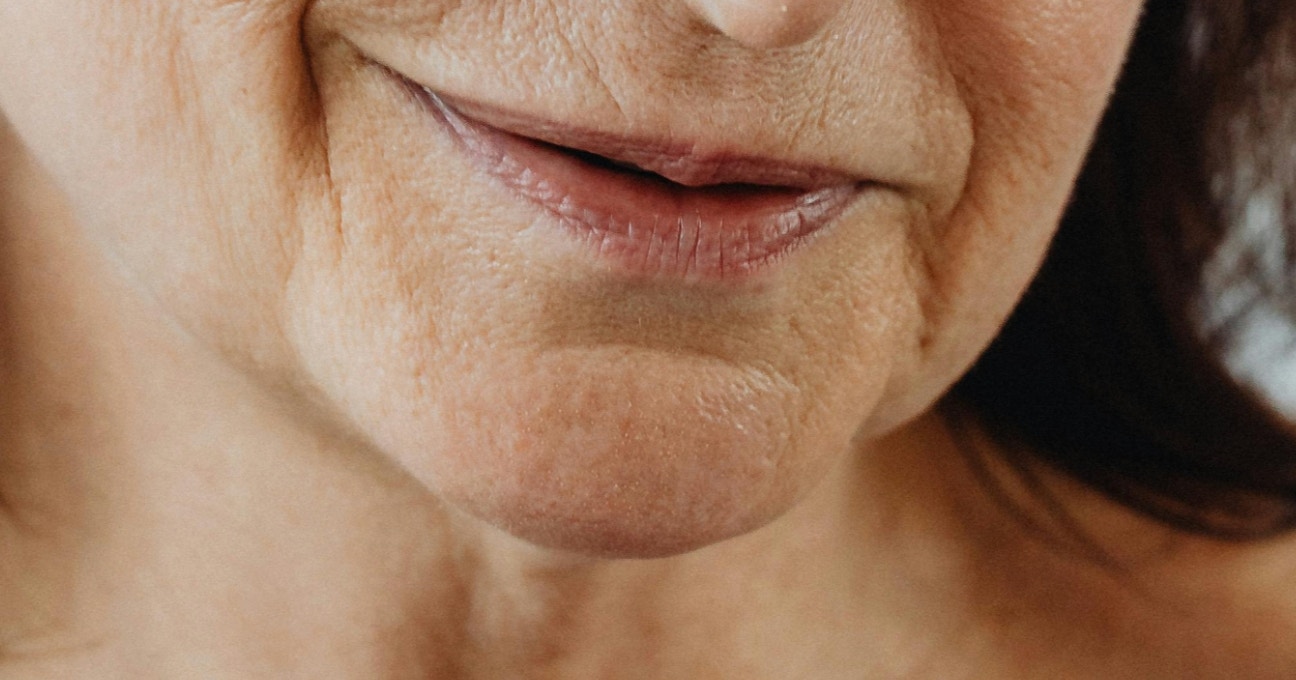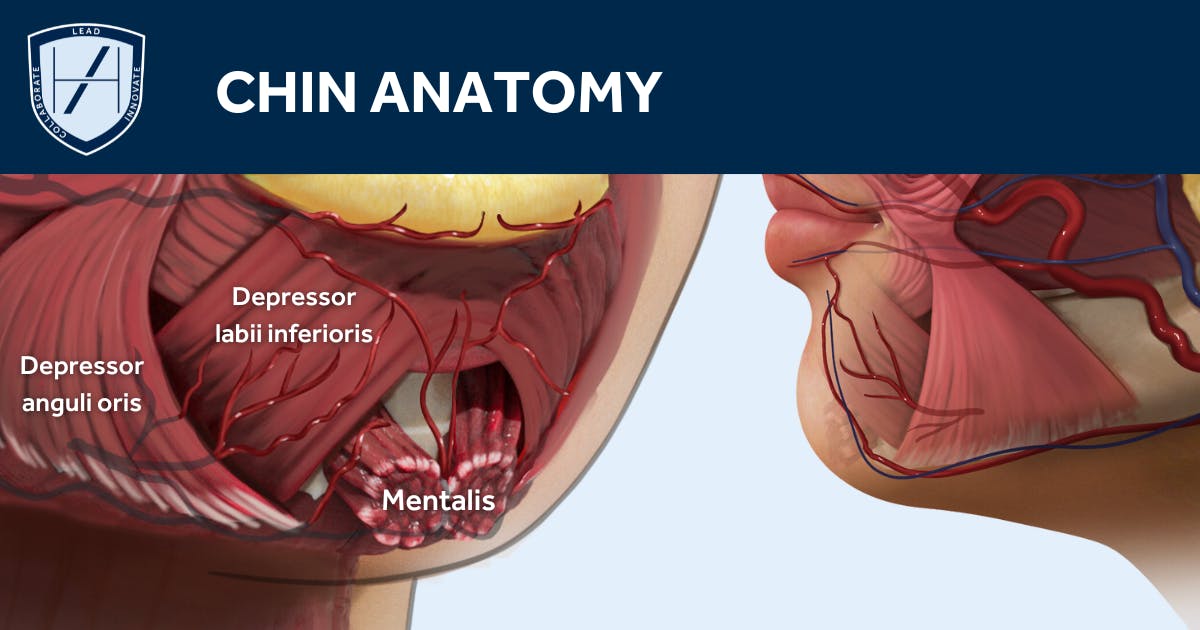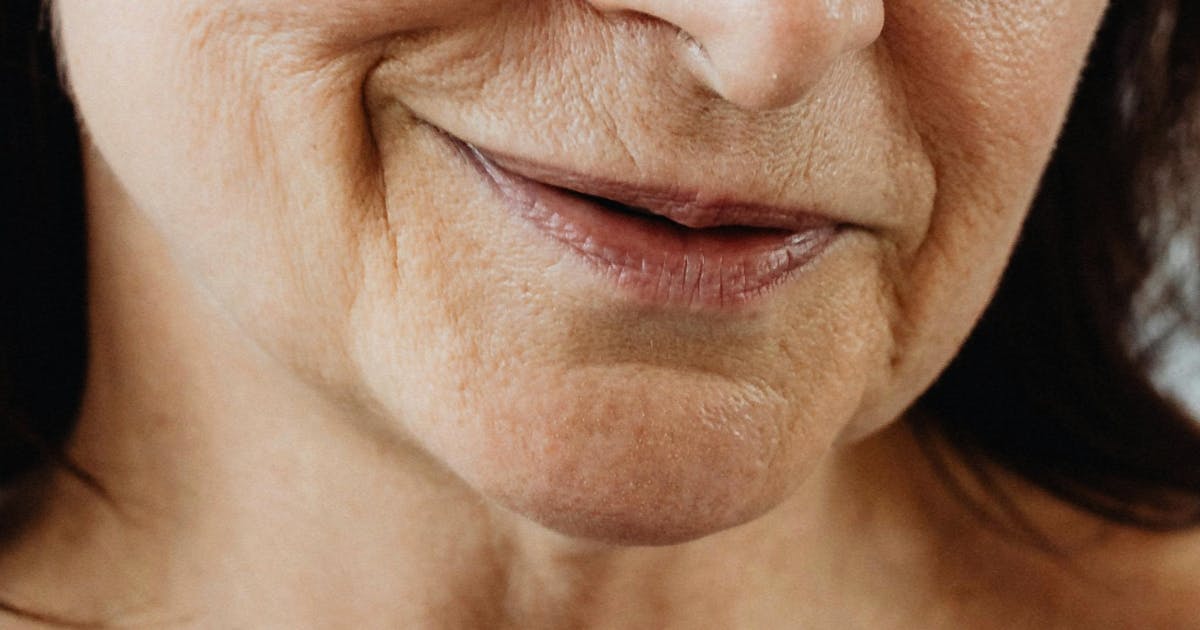Chin Botox: Treating the Mental Crease & Preventing Upwards Rotation

Chin botox isn’t one of the most obvious uses for toxin in aesthetic medicine.
However, this off-licence treatment for the chin muscles has a number of benefits that can provide subtle rejuvenation using neuromodulation. It can also address concerns such as a dimpled chin or mental crease above the chin.
Management of the lower face is being increasingly brought into the fold to meet ‘more youthful’ patient goals. Mid-face and lip treatments are often the fixation of the aesthetics industry, but a pan-facial approach, including the lower face, makes for more natural-looking outcomes.
Here we explore the various reasons for mentalis botox and why this is a useful treatment for all aesthetic practitioners to understand.

What muscles contribute to the chin appearance?
First we need to discuss the group of muscles that contribute to chin appearance. While the muscles have individual roles, they often work in harmony to produce facial expressions.
Mentalis
Protrudes, elevates and everts the lower lip as the "pouting muscle" as well as upward pull on the chin and causing skin wrinkling of the chin. This is a target for chin and mental crease Botox treatment.
Depressor labii inferioris
Controls the lower lip, pulling it down and to the side. This is to be avoided in terms of Botox treatment as it will negatively impact the smile.
Depressor anguli oris
Pulls the corners of the mouth down. Botox here can reduce the downturning of the mouth corners and soften marionette folds.
Orbicularis oris
Contracting the entire muscle closes the mouth, while contracting parts of it can cause lip kissing and twisting. Some fibres interact with the mental crease.
These muscles need to be respected with botox treatments to achieve the aesthetic goal.
Considerations include precision injecting and dosing, so as not to treat surrounding muscles unintentionally, for example, due to product diffusion. Muscles may also be treated together to provide balanced change, for example the mentalis and the depressor anguli oris.
Remember, in the lower face, it’s crucial that Botox is used to soften expression, rather than to eradicate expression.
How does a mental crease form?
The chin, or mentum, is a prominent bony structure formed by the mandible.
As we age, apart from volumetric loss of bone and fat, the muscles that attach to the chin and surrounding facial structures can weaken.
They may also become imbalanced, leading to a variety of aesthetic changes. There’s an upward rotation of the chin due to these changes and a horizontal furrow known as the mental crease or labiomental crease can become more prominent.
Also known as the chin crease, this horizontal groove appears above the chin and may be accompanied by lines and wrinkles. It's often caused by a combination of factors, including baseline genetics, muscle atrophy, loss of bone, loss of skin elasticity, and sun damage.
You can assess this from both the front and by examining the side profile of your patients. It may become more prominent in animation, too.
If you have images of them from these views from previous years, this is even better as it will allow you to note any changes. Older images will also help you to establish their baseline and response to treatment.

Chin botox to prevent upwards rotation and smooth the mental crease
We can use a neurotoxin to treat the mental crease and address upward rotation of the chin simultaneously.
By temporarily paralysing the mentalis muscle, botox helps to reduce the appearance of this line. Weakening the targeted muscle also prevents the chin from rotating upwards.
As noted above, this can also help to reduce the appearance of ‘peach pit’ or ‘cobblestone’ chin dimpling.
Injection layers and needle depth for treating the mentalis and mental crease
- Injection layer: The primary target for treatment is the mentalis for both indications
- Needle depth: The needle should be inserted into the muscleat a depth of 2-3 millimetres. This ensures the toxin reaches the target muscle. It’s important to reach deep and more superficial fibres to prevent paroxysmal bulging of the muscle post treatment.
Injection techniques for the mental crease
Aliquots of product are placed in the target muscle, more medially, to avoid the depressor labii inferioris.
Some aesthetics practitioners may use a retrograde thread of product to catch the deep and superficial fibres.
Injectors may inject a series of small superficial boluses along the length of the mental crease too. Only tiny amounts are required for this.
How many units of botox do you use for this treatment?
The amount of botulinum toxin you need to inject for this treatment should be tailored to each patient.
You’re usually looking at a dose of between 4-12 units of Botox for the mentalis, depending on how deep the crease is.
Complementary treatment considerations
In many cases, combining chin botox with other treatments may provide more comprehensive results.
First, establish your patient’s reason for treatment so you can form a list of holistic options to present to them.
Chin filler
Consider whether chin filler could help your patient to achieve their desired outcome.
This can help to restore more youthful contours to the lower face, so is a nice choice where ageing is a concern. It's especially useful for longer-lasting results compared to botox.
Filler may also address other areas of concern, such as chin shape, as well as it’s modulatory impact on surrounding muscle.
You can get valuable tips on chin filler for cosmetic injectors in our article Aesthetics Experts’ Chin Filler Advice.
Skin treatments
Additionally, where skin quality is an issue, treatments such as microneedling - pictured below - or laser resurfacing may be appropriate.
You can recommend all viable options to your patient during the consultation element of their appointment. This will allow them to make an informed decision about their treatment, which you can then use to build your plan.

Preventing upwards rotation of the chin
We often talk about volume loss, usually in the mid-face, when discussing signs of ageing.
As we age, bone loss, contributes to lower face too. For example, mandibular body height, length decrease with age.
This often makes the face appear older in a way that isn’t immediately obvious. For example, it’s highly unlikely that a patient will ask for treatments to lengthen or restore height to their chin. Instead they may express concerns of generally feeling that they’re looking older or showing more signs of ageing.
Ageing phenomena such as these can also contribute to the formation of other lines in this region, including marionette lines, jowls and a downturned mouth. These are easier for patients to point to and are more obviously associated with ageing.
The chin may start to rotate upwards conveying negative emotion or ‘frowning’ of the face associated with ageing, as a result. So, by treating this concern, you can provide patients with a subtly more youthful appearance.
It’s a great treatment to assess for when considering overall facial rejuvenation as it’s not something patients ask for directly.
Smoothing ‘peach pit’ chin dimpling with mentalis botox
Another reason for chin botox injections to the mentalis is to smooth a dimpled chin. You may also hear this presentation referred to as a “peach pit chin”, “chinulite” or “peau d’orange”. This concern can also contribute to formation of a labiomental crease.
In our previous article, Using Chin Botox to Address Dimpling and Creasing, clinical trainer and aesthetic medicine specialist, cosmetic nurse, Paula O’Sullivan said:
“Botox can be used to treat the large mentalis muscle that sits within the chin and below the lower lip.”
Paula explained that it’s an “effective treatment for patients that have a hyperactive mentalis muscle resulting in dimpling of the chin and/or an upturned mentalis muscle.”
She advised that toxin is used to “relax the mentalis muscle. This reduces the ‘cobblestone’ effect and softens the labiomental crease”, Paula notes.
How to assess your patient for treatment suitability
Paula provided the following guidelines:
“To assess if the patient is suitable, ask them to purse their lower lip with which the mentalis will contract. If the patient’s chin dimples during contraction, then I would deem them suitable for treatment and expect positive results.
“If there’s no dimpling of the chin or the muscle doesn’t appear hyperactive, then there’s no need for treatment.”
Botox courses for medical professionals
At Harley Academy we only teach aesthetic medicine to medical professionals. You can find out our specific entry criteria on our Eligibility Checker page.
We offer a number of filler and botox courses covering the basic ‘3 area’ upper face treatments. These are the primary toxin treatments that all aesthetic practitioners learn first. They can be used to establish your practice and build your business on, thanks to sustained demand.
Building upon that, you can move into more advanced botox treatments. These include:
- Chin botox - mentalis and mental crease
- Lip Flip - everting the upper lip to provide more ‘show’ without adding volume
- Masseter botox - jawline slimming
- Platysmal bands - vertical neck bands
- DAO botox to treat a downturned mouth
- Gummy smile to reduce excessive gingival display.
These treatments are covered in our upcoming injectables course, Advanced Botox Training. You can join the waiting list for what’s proving to already be a popular option, on our Coming Soon page. Just click on the banner above, then complete your waiting list registration.
We look forward to bringing you further details of this new botox course soon!
All information correct at time of publication
Download our full prospectus
Browse all our injectables, dermal fillers and cosmetic dermatology courses in one document
By submitting this form, you agree to receive marketing about our products, events, promotions and exclusive content. Consent is not a condition of purchase, and no purchase is necessary. Message frequency varies. View our Privacy Policy and Terms & Conditions
Attend our FREE open evening
If you're not sure which course is right for you, let us help
Join us online or in-person at our free open evening to learn more
Our Partners












STAY INFORMED
Sign up to receive industry news, careers advice, special offers and information on Harley Academy courses and services


